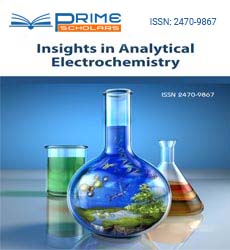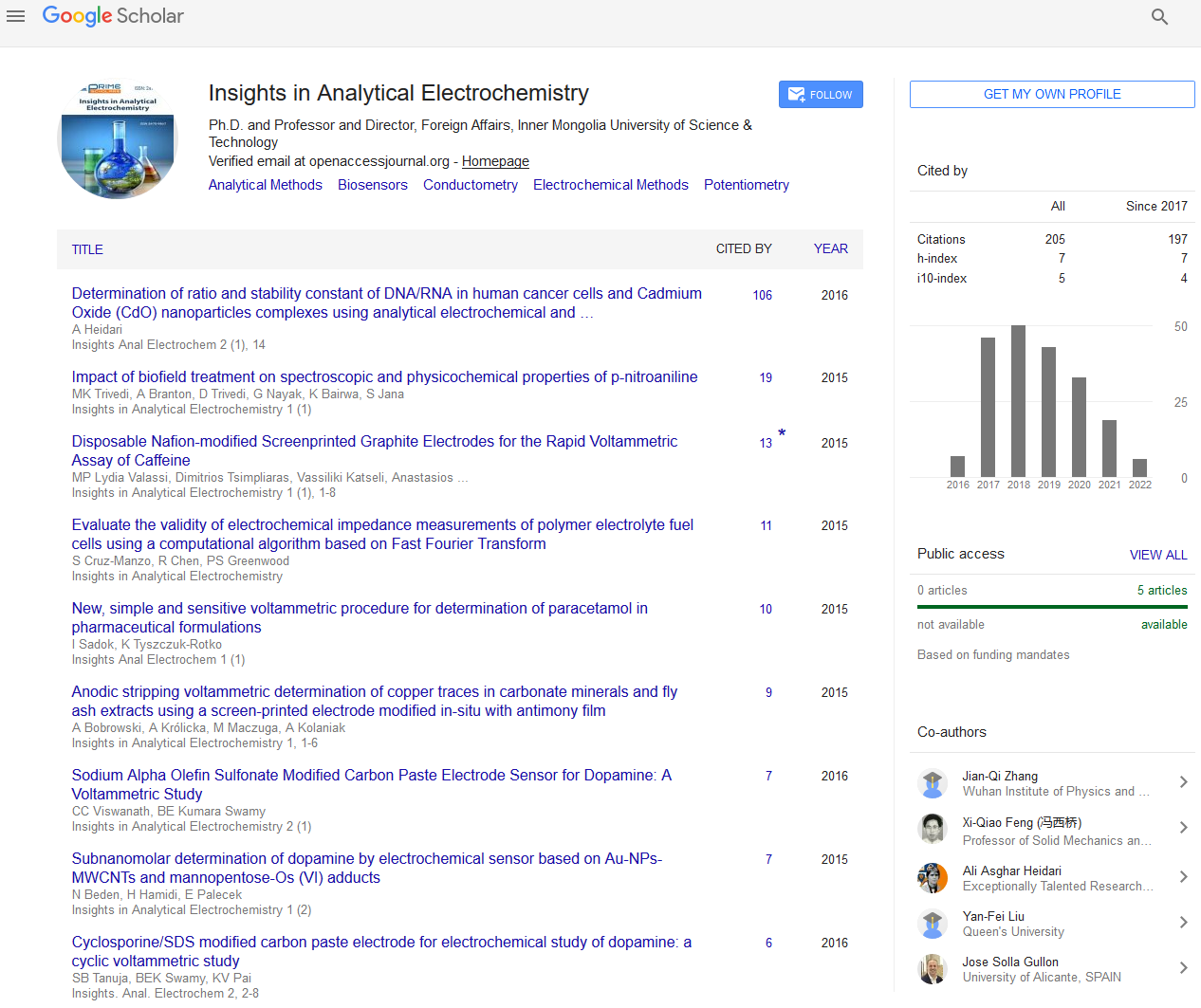Commentary - (2022) Volume 8, Issue 4
The Separation of Charge Frequently between Homogeneously and Heterogeneously
Cabarcos-Fernandez*
Department of Forensic Toxicology Service, University of Santiago de Compostela, Spain
*Correspondence:
Cabarcos-Fernandez, Department of Forensic Toxicology Service, University of Santiago de Compostela,
Spain,
Email:
Received: 29-Jun-2022, Manuscript No. ipaei-22-13725;
Editor assigned: 01-Jul-2022, Pre QC No. ipaei-22-13725(PQ);
Reviewed: 15-Jul-2022, QC No. ipaei-22-13725;
Revised: 20-Jul-2022, Manuscript No. ipaei-22-13725(R);
Published:
27-Jul-2022, DOI: 10.21767/2470-9867-8.4.17
Description
Electrochemistry is the investigation of creation of power from
energy delivered during unconstrained compound responses
and the utilization of electrical energy to achieve non-unconstrained
synthetic changes. The subject is of significance
both for hypothetical and reasonable contemplations. Electrochemistry
is the investigation of creation of power from
energy delivered during unconstrained substance responses
and the utilization of electrical energy to achieve non-unconstrained
synthetic changes. An enormous number of metals,
sodium hydroxide, chlorine, fluorine and numerous different
synthetic compounds are delivered by electrochemical techniques.
Batteries and power modules convert compound energy
into electrical energy and are involved for an enormous
scope in different instruments and gadgets. The responses did
electrochemically can be energy productive and less contaminating.
Subsequently, investigation of electrochemistry is significant
for making new advancements that are eco-friendly.
The transmission of tangible signs through cells to cerebrum
as well as the other way around and correspondence between
the cells are known to have electrochemical beginning. Electrochemistry
is thusly, an extremely immense and interdisciplinary
subject. In this Unit, we will cover just a portion of its
significant rudimentary components. Power can be delivered
when electrons move starting with one component then onto
the next in specific kinds of responses (like redox responses).
Regularly, electrochemistry manages the general responses
when different redox responses happen at the same time, associated
through some outside electric flow and a reasonable
electrolyte. All in all, electrochemistry is likewise worried about
substance peculiarities that include charge partition (as seen
regularly in fluids like arrangements). The separation of charge
frequently includes charge move that happens homogeneously
or heterogeneously between various compound species. To
guarantee electro-neutrality, at least two charge move half-responses
occur at the same time, in inverse headings: Oxidation (loss of electrons or expansion in oxidation state) and decrease
(gain of electrons or decline in oxidation state).
On terminal surfaces, the oxidation and decrease half-responses
are isolated in space, as a rule happening at various cathodes
drenched in arrangement in a solitary cell or in discrete
cell compartments. The cathodes are connected by directing
ways both in arrangement (through ionic vehicle) and remotely
(by means of electric wires and so on) so that charge can be
moved and the electrical circuit finished. At the point when the
amount of the Gibbs energy changes at the two anodes is negative
the electrical energy delivered can be bridled (batteries,
power devices).
Conclusion
In the event that it is positive, outside electrical energy can be
provided to conquer the positive Gibbs energy distinction and
oblige anode responses to happen and change over compound
substances (electrolysis). In this way, on the off chance that the
cell design allows, the results of the two anode responses can
be isolated, for instance, as happens in modern electrolytic responses.
Faraday’s law of electrolysis may be expressed along
these lines: How much substance created at every terminal
is straightforwardly relative to the amount of charge moving
through the cell. Obviously, this is generally a rearrangement.
Substances with various oxidation/decrease changes regarding
the electrons/molecule or particle won’t be created in similar
molar sums. Be that as it may, when those extra proportions
are considered in, the law is right in all cases.
Acknowledgement
None.
Conflict of Interest
The author’s declared that they have no conflict of interest.
Citation: Fernandez C (2022) The Separation of Charge Frequently between Homogeneously and Heterogeneously. Insights Anal
Electrochem. 8:17
Copyright: © 2022 Fernandez C. This is an open-access article distributed under the terms of the Creative Commons Attribution License, which permits unrestricted use, distribution, and reproduction in any medium, provided the original author and source are credited.

